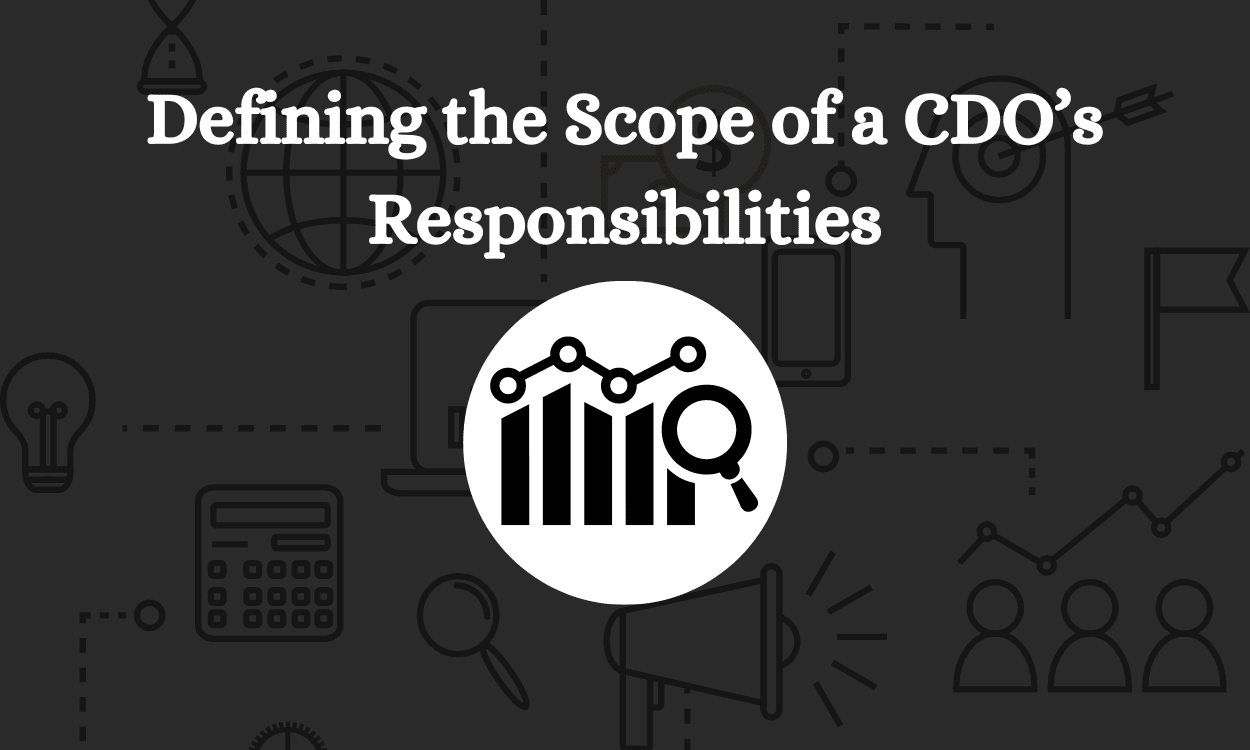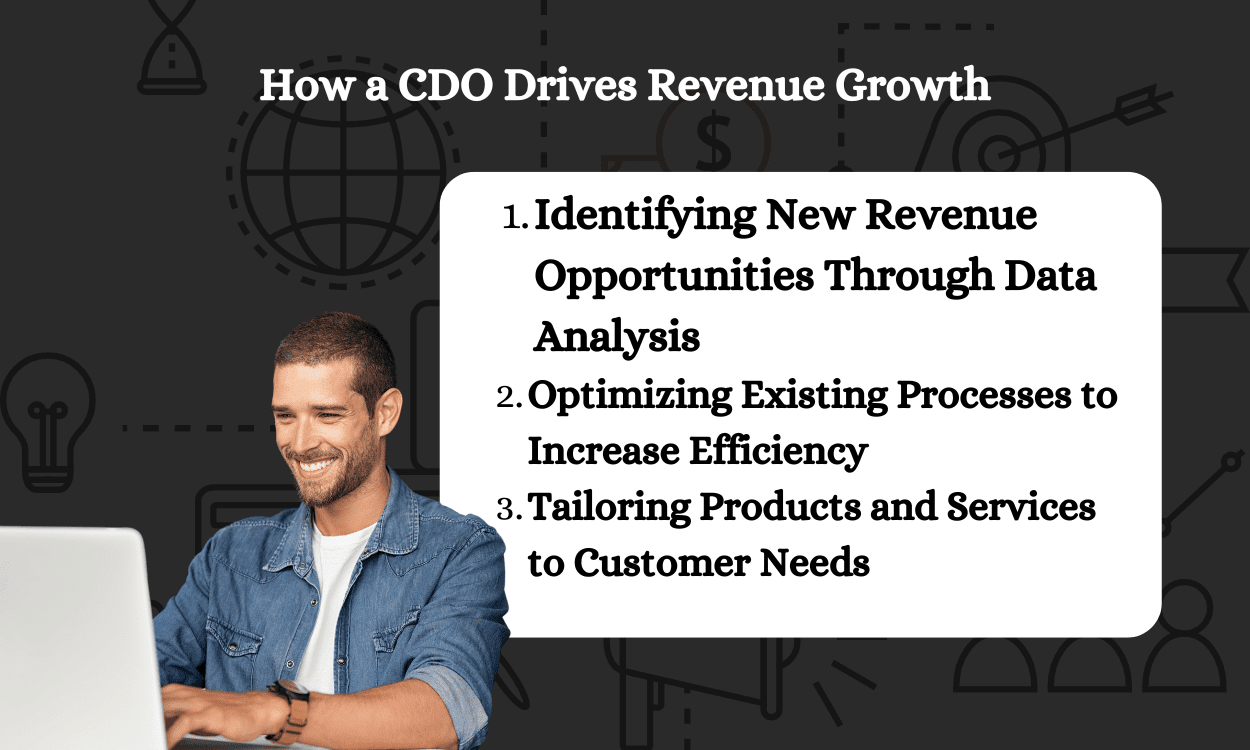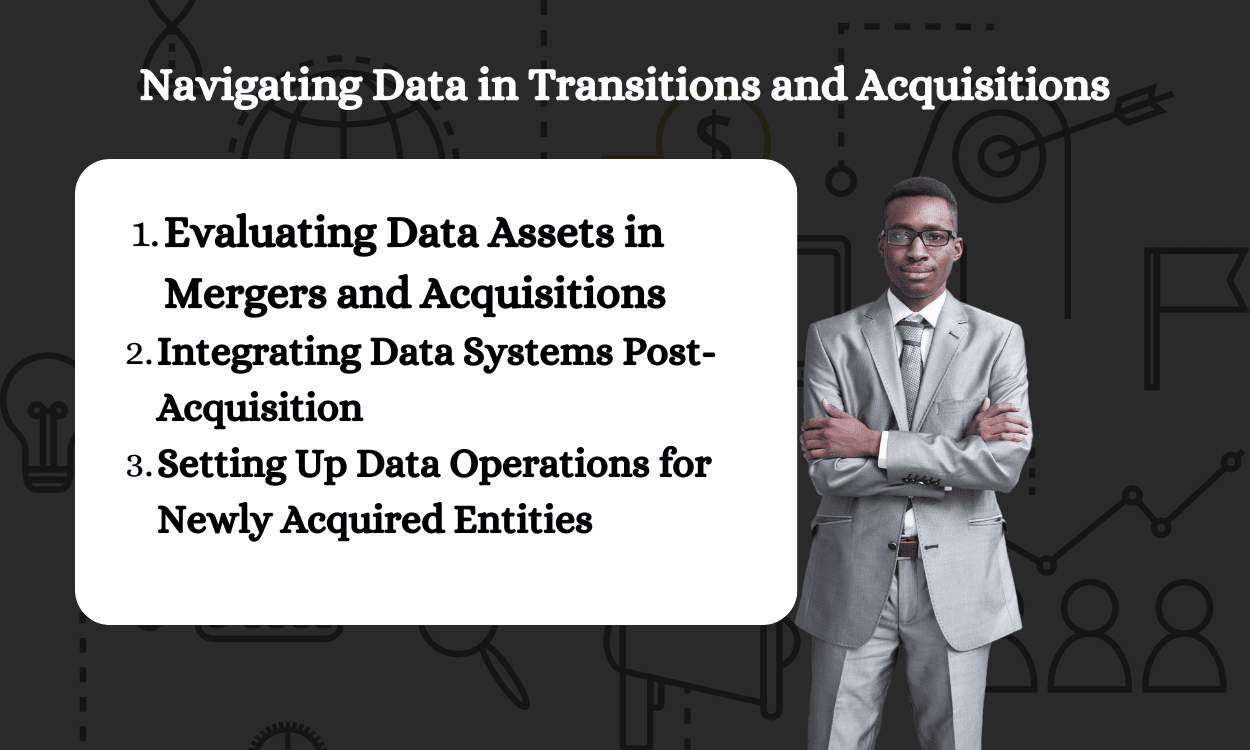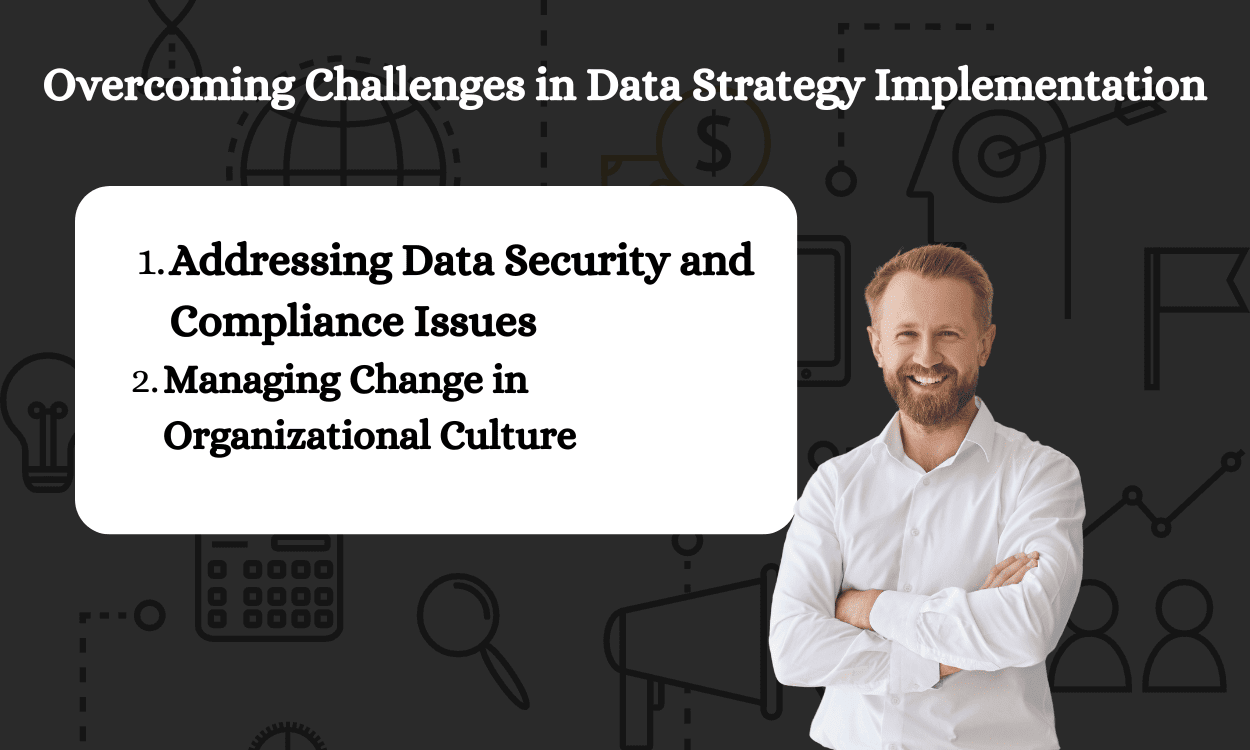How Does a CDO Transform Data into a Strategic Asset?
In today’s hyper-connected world, data is the lifeblood of any successful business. Companies are swimming in data from various sources, but the real challenge lies in turning this raw information into actionable insights. This is where the Chief Data Officer (CDO) steps in, acting as the architect of a company’s data strategy. A CDO doesn’t merely manage data; they transform it into a strategic asset that fuels innovation, drives revenue growth, and ensures a company’s competitive edge.


Defining the Scope of a CDO’s Responsibilities
A Chief Data Officer’s (CDO) responsibilities are as diverse as the data they manage. Instead of focusing on one area, this role is multifaceted and demands a deep understanding of the technical and business aspects of data. Let’s explore the primary areas that fall under the purview of a CDO.
Overseeing data management
At the heart of the CDO’s role is overseeing data management. This involves developing and implementing policies and procedures for collecting, storing, processing, and protecting data. Think of the CDO as the organization’s data infrastructure architect, ensuring that data flows seamlessly and securely across different departments and systems. This oversight is crucial for maintaining operational efficiency and minimizing data-related risks.
Ensuring data quality and accessibility
A CDO doesn’t just ensure data is available; they also focus on its quality and accessibility. Data riddled with errors or difficult to access is as good as useless. Therefore, the CDO champions initiatives to improve data accuracy, completeness, and consistency. Moreover, they strive to make this high-quality data readily accessible to authorized personnel across the organization, facilitating data-driven decision-making at all levels.
Aligning data strategy with business goals
More than just a technical role, a CDO plays a strategic role in aligning data strategy with business goals. This involves working closely with other executives to understand the company’s objectives and then translating these goals into a practical data strategy. This includes identifying which data is most valuable to the organization, how it can be leveraged to achieve specific business outcomes, and what new data-driven initiatives can unlock further growth. A notable trend is the growing responsibility in data ethics. As many as 33% of CDOs now have data ethics under their purview, a new and rapidly growing area of responsibility. This reflects a growing awareness of the ethical implications of data use and the importance of establishing responsible data practices.

How a CDO Drives Revenue Growth
A CDO is crucial in driving revenue growth by unlocking data’s potential as a strategic asset. A CDO can significantly impact a company’s bottom line through data analysis, process optimization, and customer-centric strategies. Let’s explore the key ways a CDO contributes to revenue generation.
Identifying New Revenue Opportunities Through Data Analysis
A CDO can identify new revenue opportunities by leveraging data analysis techniques. By examining customer data, market trends, and competitor analysis, they can uncover hidden patterns and insights that lead to new product or service offerings, market expansion, or strategic partnerships. Data analysis can reveal unmet customer needs, untapped markets, and emerging trends, allowing businesses to capitalize on opportunities they may have missed.
Optimizing Existing Processes to Increase Efficiency
Data-driven insights can significantly enhance operational efficiency, directly impacting revenue growth. By analyzing operational data, a CDO can identify bottlenecks, streamline workflows, and optimize resource allocation. This results in cost savings, improved productivity, and faster time to market, ultimately contributing to higher profitability.
Tailoring Products and Services to Customer Needs
Understanding customer needs is paramount for revenue growth. A CDO can leverage data to create personalized customer experiences by analyzing customer data such as purchase history, browsing behavior, and demographics. This allows businesses to tailor their products and services to specific customer segments, increasing customer satisfaction, loyalty, and, ultimately, revenue.

Navigating Data in Transitions and Acquisitions
In today’s business landscape, mergers and acquisitions (M&A) are common strategies for growth and expansion. However, they also present unique data management challenges. The role of the CDO becomes particularly crucial during these transitions, as they are responsible for navigating the complexities of integrating data assets, systems, and operations.
Evaluating Data Assets in Mergers and Acquisitions
Before a merger or acquisition occurs, the CDO plays a crucial role in evaluating the data assets of the involved companies. This involves understanding the volume and quality of data, assessing its potential value, and identifying any possible risks or liabilities associated with the data. For instance, the CDO must determine whether the data complies with relevant regulations and assess the security measures to protect sensitive information.
Integrating Data Systems Post-Acquisition
Once a merger or acquisition is complete, integrating the companies’ data systems is one of the biggest challenges. This process can be complex and time-consuming, requiring a deep understanding of both systems and a clear plan for merging them. The CDO will lead the effort to consolidate data warehouses, harmonize data models, and establish a unified data governance framework. The goal is to create a seamless data flow across the newly combined organization.
Setting Up Data Operations for Newly Acquired Entities
Acquiring a new entity often means incorporating data operations into the existing infrastructure. The CDO will be responsible for setting up data pipelines, establishing data quality control measures, and ensuring data accessibility for the newly acquired entity. This also involves integrating the new entity’s data into the organization’s overall data strategy, aligning data governance policies, and establishing clear reporting lines for data-related activities.

Overcoming Challenges in Data Strategy Implementation
Successfully implementing a data strategy can be challenging. It requires navigating a complex landscape of challenges, from ensuring data security and compliance to fostering a data-driven organizational culture. Let’s explore these challenges and how a skilled CDO can overcome them.
Addressing Data Security and Compliance Issues
One of the most significant hurdles a CDO faces is ensuring data security and compliance with ever-evolving regulations. Protecting sensitive information from breaches and adhering to legal frameworks like GDPR or CCPA are non-negotiable aspects of data management.
A CDO tackles this challenge by:
- Developing and implementing robust data security protocols includes access control mechanisms, encryption, and regular security audits to identify and address vulnerabilities.
- Staying abreast of current and upcoming data privacy regulations: This ensures the organization’s data management practices remain compliant, minimizing legal risks and maintaining customer trust.
- Fostering a culture of data security awareness: A CDO builds a human firewall that complements technological safeguards by educating employees about best practices and the importance of data protection.
Managing Change in Organizational Culture
Transitioning to a truly data-driven organization often requires a significant cultural shift. Many organizations struggle with ingrained practices that prioritize intuition over data-informed decision-making. This resistance to change can hinder the effectiveness of even the most well-crafted data strategy.
To address this, the CDO acts as a change agent, championing the value of data across all organizational levels. This involves:
- Communicating a clear vision for data-driven decision-making: The CDO inspires stakeholders’ buy-in by highlighting the benefits of data-informed insights.
- Providing training and resources to empower employees: Equipping employees with the skills and tools to work with data effectively is essential for building confidence and encouraging data adoption.
- Celebrating successes and proving the positive impact of data-driven decisions: By showing tangible results, the CDO reinforces the value of data and motivates continued cultural change.
Need Some IT Support?
Conclusion: Why Every Business Needs a CDO
In today’s digital age, where every click, purchase, and interaction generates valuable data, the role of a Chief Data Officer has become indispensable for organizations of all sizes. The insights derived from analyzing this data can empower businesses to make informed decisions, optimize operations, and enhance their bottom line. This makes a compelling case for why every business needs a CDO. A quick look at a data officer job description reveals the importance of this position.
A CDO orchestrates the entire data lifecycle, ensuring data quality, accessibility, and security. Beyond technical expertise, they possess the strategic vision to align data initiatives with overarching business objectives. This includes identifying opportunities for innovation, streamlining operations, and fostering a data-driven culture.
Call to Action: Assess Your Data Strategy Today
If your organization hasn’t already, now is the time to assess your data strategy and consider the advantages of having a CDO. Investing in a skilled CDO is a proactive step toward harnessing the power of your data and transforming it into a strategic asset that fuels growth, innovation, and success.

